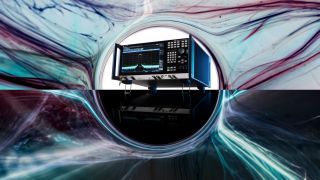ACLR measurements
ACLR is measured using a spectrum or signal analyzer. When choosing a spectrum analyzer to measure ACLR, high dynamic range is the most important parameter, since ACLR measurements require accurate measurement capabilities at both very high and very low power levels.
As mentioned above, ACLR measurements involve summing up or integrating the total power in each channel, so ACLR measurements are normally performed using a specialized automatic measurement function. Results are displayed both graphically and numerically.
When it comes to configuring ACLR measurements, some wireless communications standards specify measurement parameters. With some analyzers, you can configure the settings by loading a setup file that specifies the parameters. They may also be able to automatically configure optimal settings based on a user-defined channel configuration.
If manual configuration is required, there are some standard guidelines regarding measurement parameters:
- Span should be wide enough to cover all channels, with an additional recommended margin of 10%.
- Resolution bandwidth should be set to 1-4% of the channel bandwidth. Resolution bandwidth involves a tradeoff between speed and accuracy: a narrow bandwidth means higher accuracy but slower sweep times.
-
Video bandwidth should be set to at least three times the resolution bandwidth.
- A root mean square (RMS) detector should be used, since ACLR is a power measurement.
- Increasing the sweep time is a good way to improve measurement reproducibility, although it will of course also increase the overall measurement time.
- Noise cancellation should be enabled, if the analyzer supports it.















